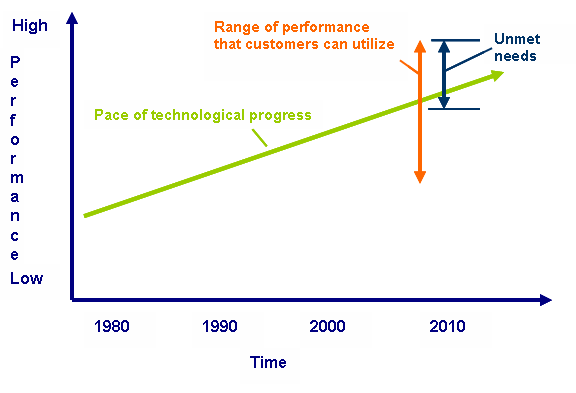It's no accident that successful companies rely on innovation to stay ahead. In today’s global competitive market, executives expect new product revenue to be about 30-35 percent of sales. The problem for growth seeking managers, of course, is that the exciting growth markets of tomorrow are small today. From the perspective of a firm seeking successful new product innovation, there are two basic areas of innovation:
- Meeting unmet market needs of customers
- Meeting existing needs better or more economically
Lucintel works with clients to identify new growth opportunities, and overcome the challenges to making their innovation opportunities feasible and profitable. Our solutions radically improve the success of new product innovation, while meeting technical, financial and time-to-market requirements.
Product innovation is best accomplished by determining the critical requirements for success with sufficient depth and precision to guide development activities before major expenditures is made on design, manufacturing facilities, marketing and distribution efforts.
To launch a successful product innovation, Lucintel has developed a model where it performs four areas of organized checklist or framework to ensure that all areas are covered. Lucintel model is termed as “NTVB” analysis. The technique is market driven and ensures high return on investment (ROI) and success. NTVB analysis is based on following 4 steps.
- Needs Analysis
- Trend Analysis
- Value Analysis
- Benefits Analysis
In each of the above four areas, Lucintel answers many questions as follows to ensure highest chance of success.
Needs Analysis: The focus of this study is to understand unmet or existing market needs. Research would proceed from need identification to in-depth understanding of needs, why they are important, and documentation of technical, market, economic and competitive factors affecting possible solutions. The key objectives in this section are as follows.
- Market requirements: Why would users accept the innovation? Why would they change from current practice? What amount of improvement over current practice would attract customers to use the innovation? What would be the expected life of the innovation? Who are potential users?
- Functional (product) requirements: Technical and physical requirements of the product such as weight / sq.ft., flexibility, performance, properties, etc.
- Economic requirements: Life cycle cost of the innovation – expected savings in material cost, processing, use, maintenance, replacement - and expected payoff. Cost structure of current practice vs. proposed innovation, including margin estimates.
- Competitive requirements: What competitors have similar or related innovations or capabilities and what is their potential threat to this innovation?
- Trend Analysis: Investigate trends in innovation along the unmet and / or met needs. What industry players are doing to meet the needs? Trends in materials development in terms of performance and price. Is there any known technology already there to meet the need? What market trends would support development and acceptance of solutions? Which trends would hinder usefulness and acceptance? Does a window of opportunity exist, and must a solution be found and implemented in a given time frame?

As shown in above chart, performance over time generally improves via sustained innovation by industry suppliers to meet customers’ ever-increasing needs or wants. When there is a gap between customer needs and actual performance delivered, there is an opportunity for a new innovation to meet those needs, rather than waiting for industry players to meet the performance desired. By introducing an improved solution, a new player may gain entry to a market by “filling the gap” in performance to satisfy the unmet customer needs. In the chart, performance shown in Y axis could be improvement in cost saving, or flexural strength or surface finish quality.
Value Analysis: Estimate value ($) and profitability created by the innovation along the value chain (from end customer to fabricator / molder to material supplier). Perform detailed cost analysis over the period of product life – expected lifetime cost & value of the innovation versus current practice.
Benefits of Innovation: Identify whether and why the new innovation is better than existing technologies and solutions available in the market. Determine critical factors and criteria that must be met to consider the innovation a success.